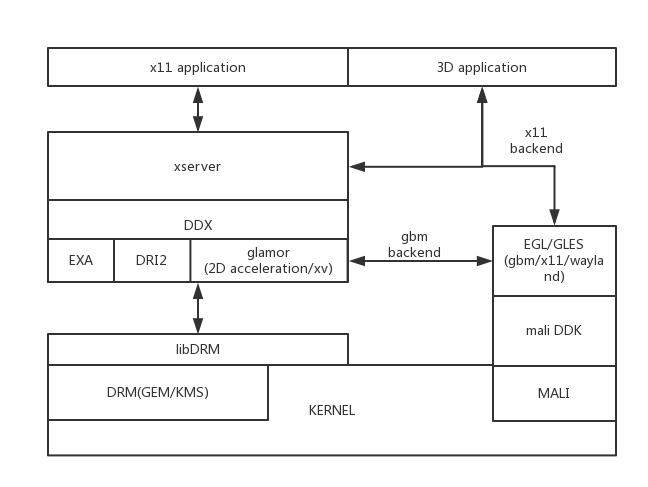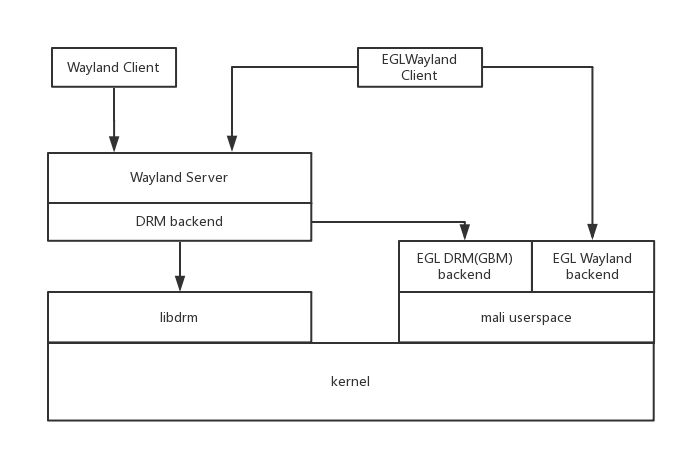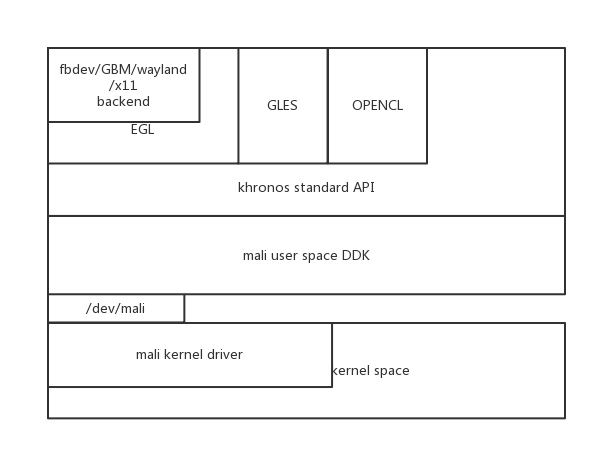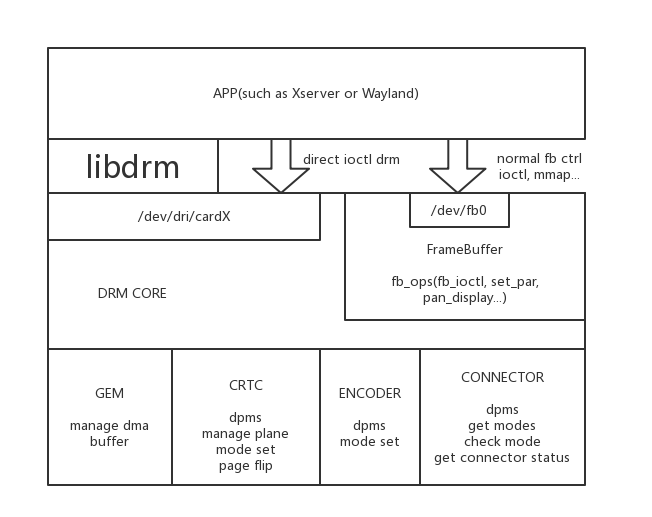Graphics
Contents
Graphics Introduce
This article will give an overview of how graphics are generated on a rockchip platform.
Graphics with X11
Xserver is the display system used on regular desktop Linux platforms.
Rockchip have a custom Xserver which have enable glamor 2D acceleration.
Xserver usually have a good compatibility, but the performance may be little less and its size is more large than other display system.
Gstreamer X11 sink have DRM 4k-Video render support(though hacky).
Structure
X11 structure in Linux OS
DDX(armsoc)
source code: git clone git@github.com:markyzq/xf86-video-armsoc.git
maliline: git://anongit.freedesktop.org/xorg/driver/xf86-video-armsoc
The DDX support:
- support common x11 display and Hwcursor
- DRI2 (request by EGL X11 client)
- umplock(support non-tearing on EGL x11 client)
/etc/X11/xorg.conf: Xserver will parse this config to find DDX and configure info
Section "Device" Identifier "Mali-Fbdev" Driver "armsoc" Option "UMP_LOCK" "true" EndSection Section "Screen" Identifier "Default Screen" Device "Mali-Fbdev" DefaultDepth 24 EndSection
UMPLOCK
source code: wget http://malideveloper.arm.com/downloads/drivers/DX910/r6p1-01rel0/DX910-SW-99002-r6p1-01rel0.tgz
Patch the umplock patch to kernel, then you can find the umplock device node:
/dev/umplock
Don't forget enable DDX umplock option:
Option "UMP_LOCK" "true"
The umplock only use for x11 graphic stack, no need for wayland, because mali
already do the wayland sync on its driver.
DDX(modesetting)
X11 performance test
2D performace:
x11perf
3D preformace:
glmark2-es2
X11perf tools can easy get from x11-apps.
glmark2-es2 can get from https://github.com/glmark2/glmark2
The glmark2-es2 source code can also build for x11, drm(gbm) and wayland.
Graphics with Wayland
Weston is the reference implementation of a Wayland compositor, and a
useful compositor in its own right.
Structure
Weston
The Weston reference implementation of a Wayland compositor.
1. run wayland with drm and gpu renderer
export XDG_RUNTIME_DIR=/tmp weston --backend=drm-backend.so --idle-time=100
2. run wayland with drm and cpu renderer
weston --backend=drm-backend.so --idle-time=100 --use-pixman
--idle-time: how many seconds the weston got to sleep, it's usefull to test wayland
suspend and resume.
--use-pixman: it's usefull to compare gpu or non-gpu performance and behavior.
Wayland performance test
3D preformance: glmark2-es2-wayland
glmark2-es2 can get from https://github.com/glmark2/glmark2
OpenVG test: vg_api_tests
build from mali DDK, build with make bin/vg_api_tests
Graphics with None
If you don't want to use X11 or wayland, there are some chooses for you.
Interface:
Libdrm and libmali-gbm can be used to draw UI without display systems.
Framework:
QT can work without x11 or wayland, it run Qt5 applications on top of EGL(libmali-gbm).
WIth qt eglfs, video player can reach 1080-60fps.
MALI GPU driver
Structure
Mali Build option
Build for X11:
VARIANT=mali450-gles20-eb-linux-sse-vg-x11-dma_buf
Build for Wayland:
VARIANT=mali450-gles20-eb-vg-sse-linux-wayland-drm-dma_buf
X11 stack only use gpu x11 backend,
Wayland use two gpu backend, drm(gbm) and wayland
-x11-: x11 backend
-drm-: GBM backend
-wayland: wayland backend
-sse-: similar with neon, Accelerate memcpy on mali, speed up some api like
glTexSubImage2D
-vg-: openVG support, tested with vg_api_tests on wayland backend
-dma_buf-: support dma_buf
LibDRM
Structure
Source code
mainline source code: git clone git://anongit.freedesktop.org/mesa/drm
LIBDRM is the cross-driver middleware which allows user-space applications (such
as Mesa and 2D drivers) to communicate with the Kernel by the means of the DRI
protocol.
Mailing list
General developers discussions occur on the dri-devel@lists.freedesktop.org
mailing list.
Subscribe to the list at http://lists.freedesktop.org/mailman/listinfo/dri-devel.
Archives are found at http://lists.freedesktop.org/archives/dri-devel/.
Kernel Driver porting
Others
For details of the full Linux graphics stack, please refer to online documents in Freedesktop, ARM, Arch wiki…..





